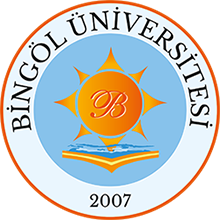The effects of heparin and pentoxifylline on prevention of intra-abdominal adhesions in rat uterine horn models: Histopathological and biochemical evaluations
Date
2011Author
Durmus, A.S. and Yildiz, H. and Yaman, M. and Simsek, H.
Metadata
Show full item recordAbstract
This experimental study was designed to evaluate the degree of adhesion formation and to determine the uterine tissue malondialdehyde (MDA), nitric oxide (NO) and reduced glutathione (GSH) contents as well as the activities of catalase (CAT) and glutathione peroxidase (GPx) in an intraperitoneal adhesion formation model (uterine horn and abdominal wall scrapping) in adult rats receiving or not simultaneous intraperitoneal instillation of heparin or pentoxifylline. The sham animals (group S, n = 7) were only submitted to laparotomy and intraperitoneally received 0.9% NaCl (2 mL), whereas in the 30 other rats, abrasions of the left horn were performed coupled to the intraperitoneal administration of 0.9% NaCl (group C), 500 UI of Heparin (group H) or 25 mg/kg of pentoxifylline (group PTX) (n = 10 in each group). All rats were sacrificed on day 14 and the macroscopic adhesion score, the histopathological examination and the measurements of oxidant and antioxidant markers were performed in the left horn samples. Compared to the not treated surged controls, the adhesion formation was significantly lowered in the H group but was only slightly reduced in the PTX group. However, the intensity of the mononuclear cell infiltrate of the uterine mucosa was significantly reduced after PTX treatment and the fibrosis was significantly diminished with heparin.addition, these 2 treatments have reduced the tissue MDA accumulation and sustained the antioxidant systems, although not significantly but they have significantly prevented the local NO formation. These results show that both heparin and pentoxifylline can limit the occurrence of the surgery-induced oxidative stress and differentially regulate the inflammatory reaction but also that heparin is in fact more efficient than pentoxifylline in preventing the intra-abdominal adhesion formation in this rat model.
URI
https://www.scopus.com/inward/record.uri?eid=2-s2.0-79957512789&partnerID=40&md5=ac4be523e6cc2085945d2ced23e3e174http://acikerisim.bingol.edu.tr/handle/20.500.12898/5034
Collections

DSpace@BİNGÖL by Bingöl University Institutional Repository is licensed under a Creative Commons Attribution-NonCommercial-NoDerivs 4.0 Unported License..













